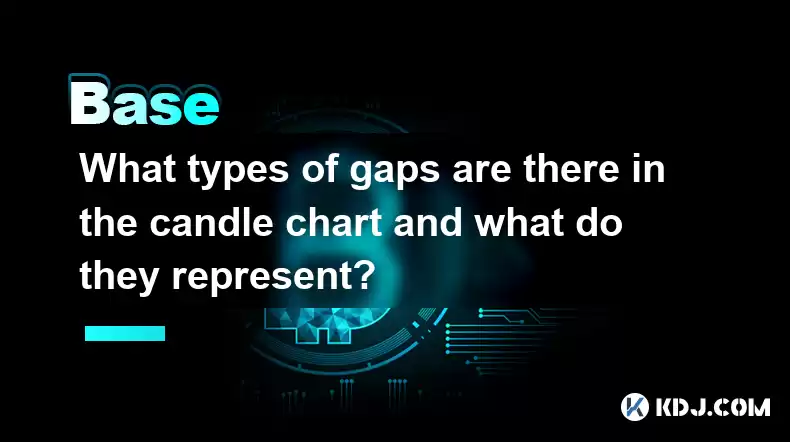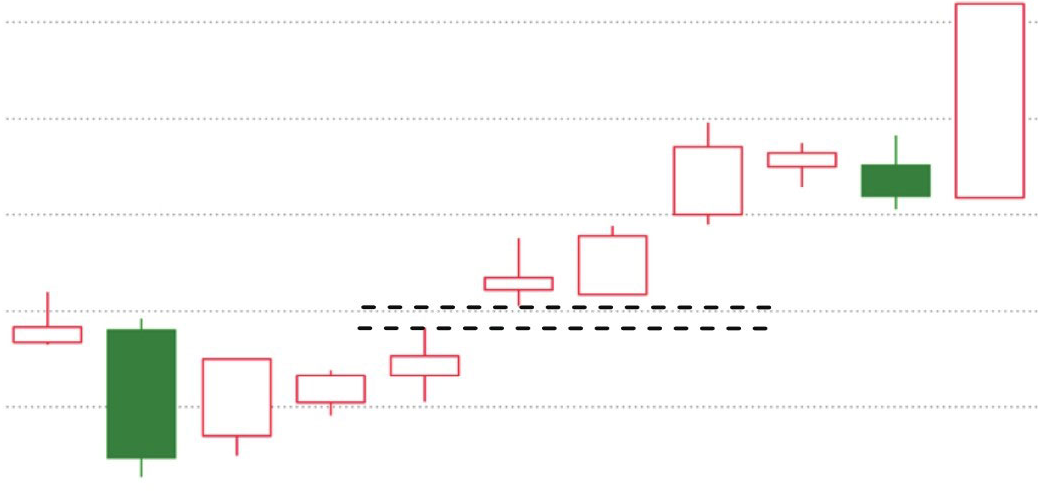-
 Bitcoin
Bitcoin $115100
1.27% -
 Ethereum
Ethereum $3675
2.71% -
 XRP
XRP $2.995
1.45% -
 Tether USDt
Tether USDt $1.000
0.02% -
 BNB
BNB $769.8
2.64% -
 Solana
Solana $168.0
3.25% -
 USDC
USDC $0.9999
-0.01% -
 TRON
TRON $0.3371
1.48% -
 Dogecoin
Dogecoin $0.2051
3.36% -
 Cardano
Cardano $0.7394
2.30% -
 Hyperliquid
Hyperliquid $38.15
0.42% -
 Stellar
Stellar $0.3966
-0.36% -
 Sui
Sui $3.486
2.93% -
 Chainlink
Chainlink $16.72
2.52% -
 Bitcoin Cash
Bitcoin Cash $568.0
4.36% -
 Hedera
Hedera $0.2440
2.59% -
 Ethena USDe
Ethena USDe $1.001
0.04% -
 Avalanche
Avalanche $22.16
2.06% -
 Litecoin
Litecoin $119.1
-0.73% -
 UNUS SED LEO
UNUS SED LEO $8.991
0.04% -
 Toncoin
Toncoin $3.232
-0.39% -
 Shiba Inu
Shiba Inu $0.00001233
2.82% -
 Uniswap
Uniswap $9.717
2.53% -
 Polkadot
Polkadot $3.664
1.85% -
 Dai
Dai $1.000
0.01% -
 Monero
Monero $281.2
-3.89% -
 Bitget Token
Bitget Token $4.350
1.55% -
 Cronos
Cronos $0.1428
5.07% -
 Pepe
Pepe $0.00001050
3.68% -
 Aave
Aave $262.3
3.54%
What types of gaps are there in the candle chart and what do they represent?
The gaps in the K-line chart reflect changes in market sentiment. Common types include ordinary, breakthrough, escape and exhaustion gaps, each with different meanings and applications, especially more frequently in the cryptocurrency market.
Apr 03, 2025 at 03:37 pm

The 'gap' in the K-line chart refers to the jump phenomenon of the price during continuous trading, that is, the blank area appearing on the price chart. The emergence of gaps usually reflects changes in market sentiment and the release of important information. The following are several common gap types in the K-line chart and their representative significance.
Ordinary notch
Common Gaps usually occur in markets with less price volatility. This gap is often meaningless and is usually filled in a short period of time. The emergence of ordinary gaps may be due to random market fluctuations or short-term trading sentiment changes.
The characteristics of ordinary gaps are:
Appears in a range with less price fluctuations
Usually filled within a few days
No obvious changes in market sentiment
Breakthrough the gap
Breakaway Gap occurs when prices break through important resistance or support levels. This gap usually marks the beginning of a new trend, accompanied by larger trading volumes. The emergence of a breakout gap indicates a significant change in market sentiment and a shift in investors' expectations for the future.
The characteristics of breaking through the gap are:
Appears when prices break through important technical positions
With larger transaction volume
Marking the beginning of a new trend

Escape gap
Runaway Gap, also known as a measurement gap, appears midway through the trend. This gap indicates the strong and sustained current trend, usually accompanied by larger trading volumes. The emergence of the escape gap indicates that market sentiment has further strengthened and investors' confidence in the current trend has increased.
The characteristics of the escape gap are:
Appears in the middle of the trend
With larger transaction volume
Indicates strong and sustained trend
Depletion gap
Exhaustion Gap appears at the end of a trend, usually marking the end of the trend. This gap is accompanied by a larger trading volume, but then the price reverses rapidly. The emergence of a depletion gap indicates that market sentiment has reached its limit and investors are beginning to take profits or stop losses.
The characteristics of the exhaustion gap are:
Appears at the end of the trend
With larger transaction volume
The price then reversed rapidly
How to identify and exploit gaps
Identification and utilization of gaps requires combining technical analysis and judgment of market sentiment. Here are some specific steps:
Observe price trends : First, observe the price trends and determine what trend the current market is in. The direction and intensity of the trend will affect the type and significance of the gap.
Analysis of trading volume : Trading volume is an important indicator for judging the type of gap. Breakthroughs and escape gaps are usually accompanied by larger trading volumes, while ordinary and exhaust gaps may have smaller trading volumes.
Combined with technical indicators : Use technical indicators such as moving averages, relative strength index (RSI), etc. to help judge the strength of the market and the sustainability of the trend.
Observe the filling of gaps : Normal gaps are usually filled in a short period of time, while breakthrough gaps and escape gaps may not be filled. Observing the filling of gaps can help judge the type of gaps and changes in market sentiment.
Formulate trading strategies : Develop corresponding trading strategies based on the type of gap and market sentiment. For example, breakout gaps and escape gaps can be used as buy signals, while depletion gaps can be sell signals.
Application of gaps in different markets
The gap has different applications and significance in different markets. In the cryptocurrency market, gaps appear more frequently due to their high volatility and 24-hour trading characteristics. Here are some applications of gaps in the cryptocurrency market:
Bitcoin Market : The gap in the Bitcoin market usually reflects changes in market sentiment and the release of important news. For example, a breakout gap may occur when Bitcoin breaks through important resistance levels, while a depletion gap may occur when market sentiment reaches its limit.
Altcoin Market : The gap in the altcoin market may be more susceptible to manipulation and short-term volatility. Investors need to combine market sentiment and technical analysis to carefully judge the type and significance of the gap.
Futures Market : In the cryptocurrency futures market, the emergence of gaps may be related to the price trend of the spot market. Investors can formulate more comprehensive trading strategies based on gaps in the spot market and futures markets.
Actual case analysis of gaps
In order to better understand the type and significance of the gap, we can analyze it through some practical cases.
Bitcoin breaks through the gap case : In October 2020, the price of Bitcoin broke through the important resistance level of $10,000, and a clear breakthrough gap appeared. Subsequently, the price of Bitcoin continued to rise, marking the beginning of a new uptrend.
Ethereum escape gap case : In May 2021, Ethereum price experienced an escape gap in the middle of the upward trend, accompanied by large transaction volume. Subsequently, Ethereum prices continued to rise, indicating the strong and sustained trend.
Bitcoin Depletion Gap Case : In April 2021, Bitcoin price experienced a depletion gap at the end of the upward trend, followed by a rapid decline in price, marking the end of the trend.
Disclaimer:info@kdj.com
The information provided is not trading advice. kdj.com does not assume any responsibility for any investments made based on the information provided in this article. Cryptocurrencies are highly volatile and it is highly recommended that you invest with caution after thorough research!
If you believe that the content used on this website infringes your copyright, please contact us immediately (info@kdj.com) and we will delete it promptly.
- BlockDAG, Litecoin, and Cardano: Charting the Course in Crypto's Dynamic Waters
- 2025-08-07 09:09:06
- Fireverse Token: Igniting a Musical Revolution in Web3
- 2025-08-07 08:27:45
- Ethereum, L2 Withdrawals, and Decentralization: A New Yorker's Take
- 2025-08-07 08:32:33
- Avalanche vs. Ruvi AI: Daily Sales Tell a Story of Crypto Disruption
- 2025-08-07 06:29:35
- DeSoc: The Crypto to Buy Now for a Decentralized Future (and Maybe 43x Gains!)
- 2025-08-07 06:50:16
- Arctic Pablo Coin: Riding the Meme Coin Wave with a Deflationary Twist
- 2025-08-07 07:18:13
Related knowledge

What is the difference between CeFi and DeFi?
Jul 22,2025 at 12:28am
Understanding CeFi and DeFiIn the world of cryptocurrency, CeFi (Centralized Finance) and DeFi (Decentralized Finance) represent two distinct financia...

How to qualify for potential crypto airdrops?
Jul 23,2025 at 06:49am
Understanding What Crypto Airdrops AreCrypto airdrops refer to the distribution of free tokens or coins to a large number of wallet addresses, often u...

What is a crypto "airdrop farmer"?
Jul 24,2025 at 10:22pm
Understanding the Role of a Crypto 'Airdrop Farmer'A crypto 'airdrop farmer' refers to an individual who actively participates in cryptocurrency airdr...

What is the difference between a sidechain and a Layer 2?
Jul 20,2025 at 11:35pm
Understanding the Concept of SidechainsA sidechain is a separate blockchain that runs parallel to the main blockchain, typically the mainnet of a cryp...

What is the Inter-Blockchain Communication Protocol (IBC)?
Jul 19,2025 at 10:43am
Understanding the Inter-Blockchain Communication Protocol (IBC)The Inter-Blockchain Communication Protocol (IBC) is a cross-chain communication protoc...

How does sharding improve scalability?
Jul 20,2025 at 01:21am
Understanding Sharding in BlockchainSharding is a database partitioning technique that is increasingly being adopted in blockchain technology to enhan...

What is the difference between CeFi and DeFi?
Jul 22,2025 at 12:28am
Understanding CeFi and DeFiIn the world of cryptocurrency, CeFi (Centralized Finance) and DeFi (Decentralized Finance) represent two distinct financia...

How to qualify for potential crypto airdrops?
Jul 23,2025 at 06:49am
Understanding What Crypto Airdrops AreCrypto airdrops refer to the distribution of free tokens or coins to a large number of wallet addresses, often u...

What is a crypto "airdrop farmer"?
Jul 24,2025 at 10:22pm
Understanding the Role of a Crypto 'Airdrop Farmer'A crypto 'airdrop farmer' refers to an individual who actively participates in cryptocurrency airdr...

What is the difference between a sidechain and a Layer 2?
Jul 20,2025 at 11:35pm
Understanding the Concept of SidechainsA sidechain is a separate blockchain that runs parallel to the main blockchain, typically the mainnet of a cryp...

What is the Inter-Blockchain Communication Protocol (IBC)?
Jul 19,2025 at 10:43am
Understanding the Inter-Blockchain Communication Protocol (IBC)The Inter-Blockchain Communication Protocol (IBC) is a cross-chain communication protoc...

How does sharding improve scalability?
Jul 20,2025 at 01:21am
Understanding Sharding in BlockchainSharding is a database partitioning technique that is increasingly being adopted in blockchain technology to enhan...
See all articles

























































































